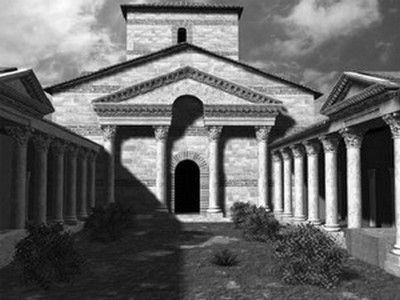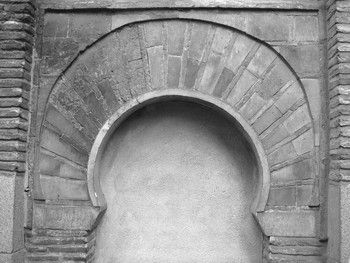Pre Romanesque Toledo
 of Toledo and its environment along the whole Pre Romanesque period. We shall start by the Villa Romana in Carranque, an example of the architecture of the Early Roman Empire, that was the main platform for the development of the Visigothic art. Our second visit will be to St. María de Melque, a magnificent Visigothic cruciform church from the end of the 7th and beginnings of the 8th centuries and, to finish off, we will know the beautiful mosque of El Cristo de la Luz, built in 999 and recently restored.
of Toledo and its environment along the whole Pre Romanesque period. We shall start by the Villa Romana in Carranque, an example of the architecture of the Early Roman Empire, that was the main platform for the development of the Visigothic art. Our second visit will be to St. María de Melque, a magnificent Visigothic cruciform church from the end of the 7th and beginnings of the 8th centuries and, to finish off, we will know the beautiful mosque of El Cristo de la Luz, built in 999 and recently restored.-Planned visits: Villa Romana de Carranque, St. María de Melque and the mosque of El Cristo de la Luz.
-Total approximate distance of the trip from Madrid: 206 Km.
-Other recommended visits: Museo de los Concilios and of the Visigothic Culture in Toledo, St. Pedro de la Mata,
Hits: 0
Mapa del viaje
Guía del viaje
Día 1
Located within a Late Roman villa, it belonged to the Prefect of the East in times of Theodosius and it is possibly the first Christian church known in Spain. It has a large lobby, an uncovered atrium fringed with two covered galleries supported upon columns, a cruciform church inscribed in a square and a four lobed mausoleum attached.
It is the most conflictive monument in all Spanish Pre Romanesque since though its structure is clearly that of a cruciform church -even the facades recall those of Montelios- its covering system and, above all, its decoration, lead to the Mozarabic period. There are many reasons from the historical point of view as well as from the architectural one that suggest us to include it in the Visigothic period.
Despite being a mosque, we include it in this web of Pre Romanesque Art because its structure is similar to many high medieval Christian monuments and allows to relate the different artistic trends from this period. It is a building with cruciform plan, formed by nine spaces separated by horseshoe arches and covered with caliphal vaults, to what a transept and an apse were added of Romanesque Mudejar style, in the 12th century.















